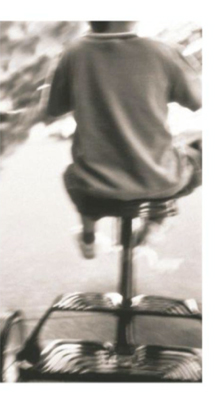Passion has always been the driving force behind our work, and it is the inspiration for creating products that last over time.
We combine passion with our desire to improve, the search and development of new ideas for new products that become educational games on wheels conceived to be shared.
OUR CYCLES EVOLVE AS THE CHILD GROWS
OUR PRODUCTS WERE BORN TO DEVELOP THE CHILD’S BALANCE AND MOTOR COORDINATION IN AN INDEPENDENT AND CREATIVE WAY.
Tricycles and First steps

Movement as source of well-being, growth and development. In early childhood, this element is absolutely important, because, through playful motor activities, the child enhances numerous learnings and reaches the essential goals in growth. These learnings also allow a gradual and harmonious development of the child’s personality and his/her multiple intelligence.
In order to better understand the importance of psychomotor aspects, it’s necessary to examine its development path. Babies start immediately exploring their surroundings, at the beginning only with their five senses (sight, hearing, smell, taste, touch); afterwards, when their motor skills progressively become more and more refined, they interact with the environment around them in a more complex and active way.
Through the motor growth, children become aware of their body, the emotion coming from it and the relational opportunities it can convey.
During the second year of life children have a clear and rapid increase in motion, the core element of the overall development of this phase; they are fascinated and rewarded by their ability to move autonomously, so that they dedicate all their time when awake to playful motor activities. It’s a conquest for them.
The functional play in the first two/three years of life is the best way for children to refine their psychomotion. They develop more and more complex motor acts with several and different final aims such as skipping an obstacle, climbing over walls, riding a tricycle, etc.
Children are fascinated both by the way in which their body moves in the space around them and in which objects can be moved (pulled, pushed, turned, handled…).
It’s essential to underline the importance of motion in the overall children’s development. For example, orientation skills are at the basis of capabilities like reading, writing, the comprehension of symbolic language in calculation and of abstract schema.
The motor activity helps children to learn the concepts of space and orientation (near/far, forward/backward, left/right) time (before / after) and rhythmic structures (slow/fast).
The need of exploring is for children satisfying, pleasing and gratifying and give them a sense of well-being. This attitude can be fostered by plays and toys which stimulate motor activities and therefore the growth of the above described capabilities.
Recommended toys are First Steps from 12 months old onwards and Tricycle starting for 2 years old onwards.
These toys stimulate several capabilities, competences and skills and also complex, articulated and intentional movements. They also improve reflexes, balance, coordination and self-control. Furthermore these toys foster readiness, skills, and agility. They support the transition from the pre-operational stage to the Formal operational stage with a clearer perception of the standing still position and the one in motion.
The tricycle also supports the exploring need of children, letting them experience freedom and autonomy. Furthermore after three years old when children start experiencing the symbolic play, the Tricycle help them be director and actor of extraordinary adventures (riding a fiery steed, a roaring motorcycle, or on the wings of a predatory prehistoric bird, towards those wonderful worlds that their imagination always produces).
Not only this. Two seats tricycle stimulates children relation, communication and socialization. It requires coordinated movements between the children, therefore it helps them find collaboration. Movements, speed and direction need common objectives and cooperation in order to be achieved.
From three to six years old children develops the playful motor activity with peers in a more significant way. This activity fosters their ability to plan together complex actions. The common use of toys stimulates children to respect each other and this will be preparatory to play games with rules when they will be five or six years old.
Considering what mentioned above it is important to underline that the tricycle (suitably designed and realized) can be an excellent toy also for children with different kind of disabilities. The objective is not rehabilitative or therapeutic, but to give them the pleasure of movement and therefore to support the exploring activity. This will foster their ability, skills and expertise related to different development areas.
So, toys with wheels, such as the First Steps and the Tricycle, allow the development of several intelligence. In early childhood, psychomotor aspects are fundamental for the development of different, complex and complementary learnings.
Dott.ssa Laura Romano
Consulente educativa e Formatrice